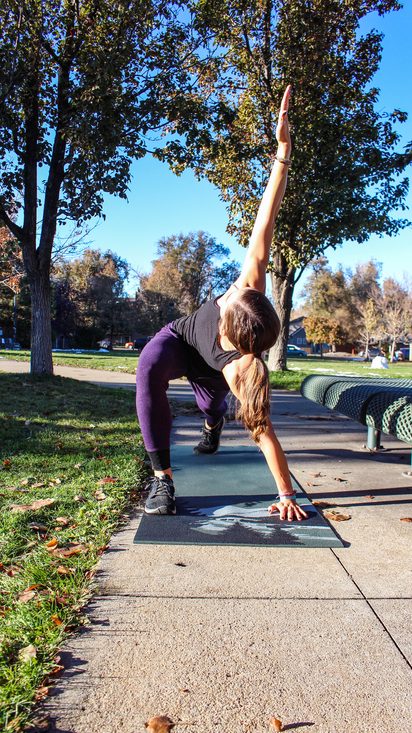 |
| Today, Coach Sandi Nypaver wanted to talk about how much runners should stretch, as well as a little bit about mobility. “I think this has been become a more confusing topic than it should be, but I’ll do my best to walk you through the similarities and differences. I’m applying the best research I’ve seen, and it also includes some thoughts from different physical therapists and sports doctors I’ve worked with. How it Works For Elite Runners: 🏆Jumping to it when thinking about flexibility for runners — it’s about being flexible in the right places! If you look up a picture or a video of an elite runner who’s actually running fast and get a shot of them from the side. What you’re going to see is a really nice hip extension. However, that same runner might not be able to touch their toes because the back of their legs are so tight. There may not be enough tightness to cause an injury, because tightness allows for the ideal storage of energy while the leg is on the ground and then the release of energy as the leg is in the air. The Rubber Band Example: ⭕️It might be helpful for most people to think about different rubber bands:A small, thick rubber band is hard to pull back, so when we do pull it back and release it, it might not go very far. Moreover, a long, skinny rubber band can be pulled back really far, but it’s hard to build a lot of tension. So it also may not go very far! However, a rubber band that is somewhere in between can be shot much farther. This is a long-winded way of saying that you should stretch anything that could be tight. As a general rule of thumb, stretch your hip flexors and quads. That’s one thing most runners should always stretch. You don’t need to be so flexible that you can stick your foot behind your head. Let’s Talk Mobility 🤸Okay, let’s go on to mobility now. Having good mobility by doing dynamic stretches could help ensure that all the joints of your body are moving optimally, especially for running. By this point, though, you might be asking, “what’s the difference between flexibility and mobility?” ✅ Flexibility can be summed up as a muscle’s ability to lengthen. ✅ On the other hand, mobility is about a joint’s ability to move through a certain range of motion. Doing a little bit of mobility from the shoulders to the feet can go a long way to help runners stay healthy. Many runners who start doing mobility exercises find that they might be sore the following days because they’re using muscles they haven’t accessed in a long time! If you also commit to throwing in a hip flexor stretch, quad stretch pretty much daily, that can help you keep a nice long stride that can allow you to get more power from your glutes. Furthermore, a long hip extension can help you increase that elastic energy as you run. In summary, adding in mobility daily, and then always stretching your hip flexors and whatever else is tight, is a really good part of any running program. Even if it’s just a little bit every day! That brings up an important note, which is it’s often better to do “mini sessions” throughout the week, rather than doing one long session every week. Personally, I always like to do a little bit of mobility before I run, along with some activation exercises. Then, if I’m doing another strength training session, I’ll do a little bit more mobility before I do the strength training exercises just to help me. Feel free to do what works best for you but at least you have a picture of how I do it. And with that, this is all I had for this week! I hope this is something you can put into your own running routine. |
